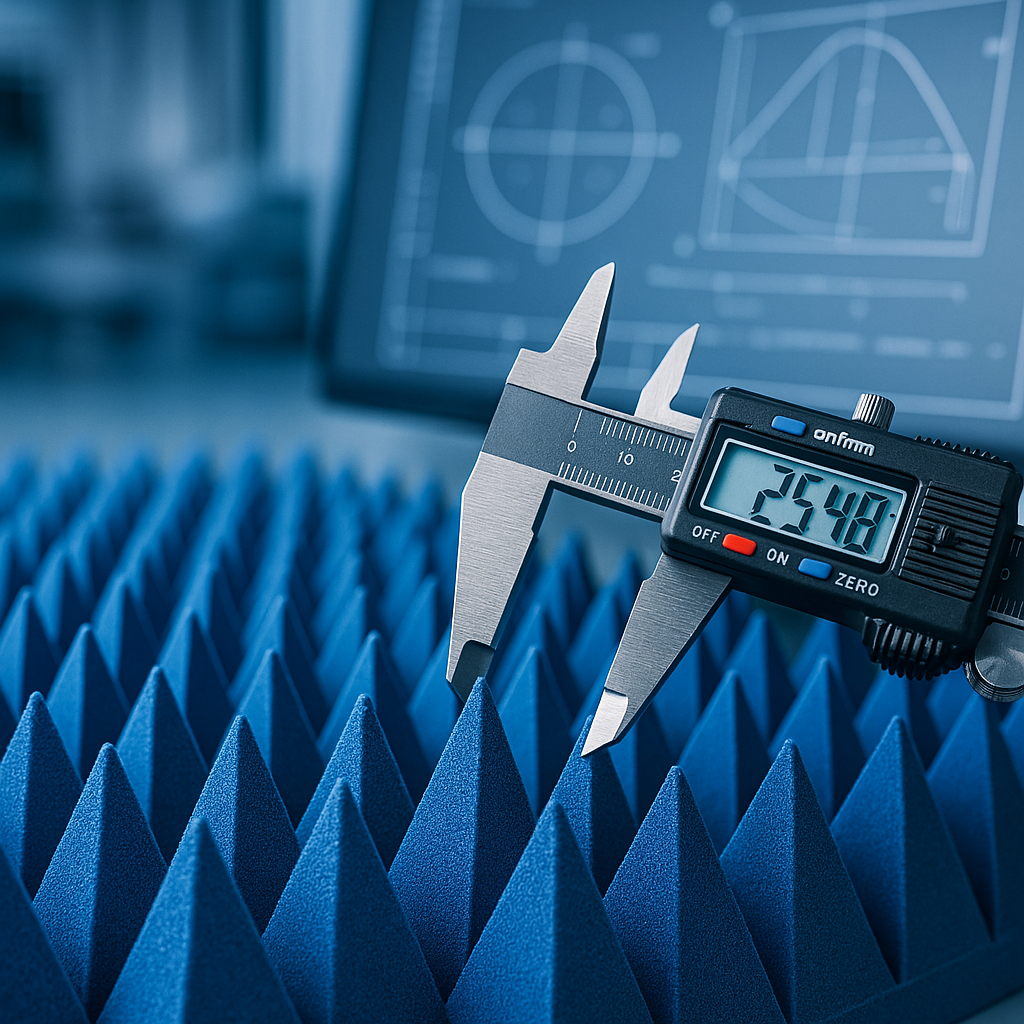RF Absorbing Shielding Explained: Why It's Essential for Effective Protection
Electromagnetic interference (EMI) and radio frequency interference (RFI) are constant challenges in today's technological landscape, particularly for sensitive electronic and medical equipment. As industries rely more heavily on electronics, the need for effective protection against these disturbances has never been more critical. This is where RF absorbing shielding comes into play. In this article, we'll explore RF shielding materials, how they work, and why they are essential for protecting valuable electronic systems from interference.
What is RF Shielding?
RF shielding refers to the use of specific materials to block or reduce electromagnetic radiation in the radio frequency spectrum. These materials prevent RF signals from either entering or escaping a protected area, ensuring that sensitive equipment operates without disruption from external interference. The effectiveness of RF shielding is determined by the shielding material's ability to absorb or reflect electromagnetic waves, thus preventing unwanted signals from affecting performance.
Types of RF Shielding Materials
Various RF shielding materials are designed to absorb or block electromagnetic radiation, each serving a unique purpose based on factors such as frequency range, conductivity, and environmental conditions. Let's look at some of the most common materials used for RF shielding:
-
Copper: Copper is one of the most effective RF shielding materials due to its excellent conductivity. It can block both the electric and magnetic components of RF waves, making it ideal for high-performance environments.
-
Aluminum: While not as conductive as copper, aluminum provides a cost-effective and lightweight solution for RF shielding. It is often used in applications where long-term durability and high performance are not as critical.
-
Steel: Steel is commonly used for structural integrity, offering durability and strength. However, its shielding effectiveness is lower compared to copper or aluminum, so it is typically used in combination with other materials.
-
Mu-Metal: Used for magnetic shielding, mu-metal is a high-permeability material that provides excellent protection against low-frequency magnetic fields. It is commonly used in MRI rooms and other sensitive environments where magnetic interference is a concern.
The Role of RF Shielding Materials in Preventing Interference
Unwanted RF signals can cause significant issues in environments like hospitals, military facilities, or industrial settings. For example, in an MRI room, RF interference can distort the magnetic resonance imaging process, leading to inaccurate readings. In telecommunications, interference can disrupt communication signals, resulting in data loss and security vulnerabilities.
RF shielding materials help prevent these issues by creating barriers that block or absorb incoming RF signals. These materials ensure that devices such as MRI machines, communication systems, and industrial machinery operate without disruptions. The materials are carefully selected based on the environment's specific needs, such as the type of interference, the frequency range, and the required level of protection.
Factors to Consider When Choosing RF Shielding Materials
When selecting RF shielding materials, it's crucial to consider several factors to ensure optimal performance:
-
Frequency Range: Different materials perform better at specific frequencies. Therefore, the shielding material must be chosen based on the frequency range of the RF signals it needs to block.
-
Durability: In environments that require long-term shielding, materials like copper, which are resistant to corrosion, are often preferred. In less demanding applications, aluminum or steel might be sufficient.
-
Cost: Budget constraints may affect the choice of material. While copper offers superior performance, it is more expensive than aluminum or steel. It's essential to balance the cost with the level of protection required.
-
Environmental Conditions: The material must withstand the specific environmental conditions in which it will be used. For instance, areas with high humidity or extreme temperatures might require special corrosion-resistant materials.
How RF Shielding Works
RF shielding creates a barrier that absorbs or reflects electromagnetic radiation from external sources. The shielding material interacts with the RF waves in various ways, depending on its conductivity, thickness, and permeability. In some cases, the material may reflect the RF waves, while in others, it may absorb and dissipate the energy as heat.
Faraday Cages
One of the most common RF shielding methods is using Faraday cages. A Faraday cage is an enclosure made of conductive material that blocks external electromagnetic fields from penetrating. The Faraday cage redistributes the charges from the external electromagnetic fields within its walls, effectively canceling the external signal. Faraday cages are often used in sensitive environments, such as MRI rooms and data centers, to protect equipment from interference.
Shielded Enclosures
Solid enclosures are another widely used RF shielding method. Made from metals like copper or aluminum, they completely contain sensitive equipment, preventing external signals from reaching it. The effectiveness of these enclosures depends on the material's thickness, conductivity, and how well it is sealed. The enclosures must be free of gaps or cracks for maximum protection, as even small openings can compromise the shielding effectiveness.
Cable Shielding and Gaskets
In many applications, RF shielding must be extended to cables and connectors. Shielded cables and gaskets ensure RF signals do not enter or exit through the wiring. These components are essential in environments where cables are exposed to external interference, such as industrial settings and communication systems.
Applications of RF Shielding Materials
RF shielding materials are used in various applications where the integrity of electronic systems is paramount. Let's explore some of the most common use cases for these materials.
MRI Rooms and Medical Equipment
RF interference can significantly impact the accuracy of diagnostic equipment in medical environments, particularly in MRI rooms. RF shielding material for MRI protects MRI machines from external RF signals, ensuring that the images produced are clear and accurate. Faraday cages, made from materials like copper, are commonly used in these environments to prevent RF signals from entering the MRI scanner.
Telecommunications
Telecommunication systems rely heavily on RF signals to transmit data. Any external interference can disrupt communication, leading to data loss, security breaches, or system failures. RF shielding materials are used in base stations, communication towers, and other critical infrastructure to prevent interference from external RF signals, ensuring reliable communication.
Industrial Applications
Industries that use sensitive electronic equipment, such as manufacturing and research facilities, often face challenges related to RF interference. RF shielding materials help protect industrial machines, testing equipment, and sensors from external disturbances, ensuring accurate results and safe operations.
In Conclusion
RF shielding materials are essential for protecting sensitive electronic equipment from interference that could compromise performance or cause damage. Whether in medical facilities, telecommunications, military applications, or industrial environments, these materials play a critical role in ensuring that devices operate as intended, free from external disruptions. By carefully selecting the right RF shield material based on factors like frequency range, durability, and cost, industries can ensure that their electronic systems remain protected, reliable, and efficient.
In conclusion, RF shielding materials offer a simple yet effective solution for maintaining the integrity of electronic systems. From copper and aluminum to flexible conductive fabrics, the variety of materials available allows for tailored protection that meets the unique needs of each application. As technology advances, the demand for effective RF shielding will only grow, making it a crucial component in many industries.


